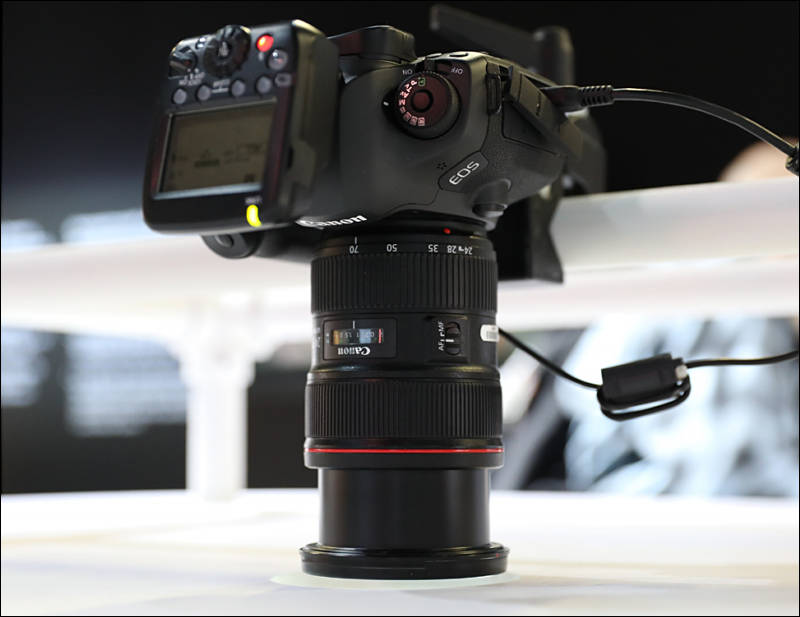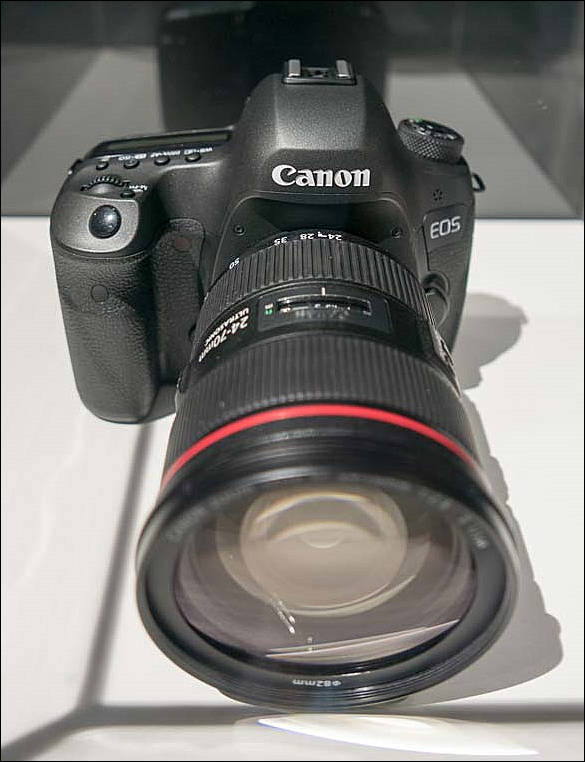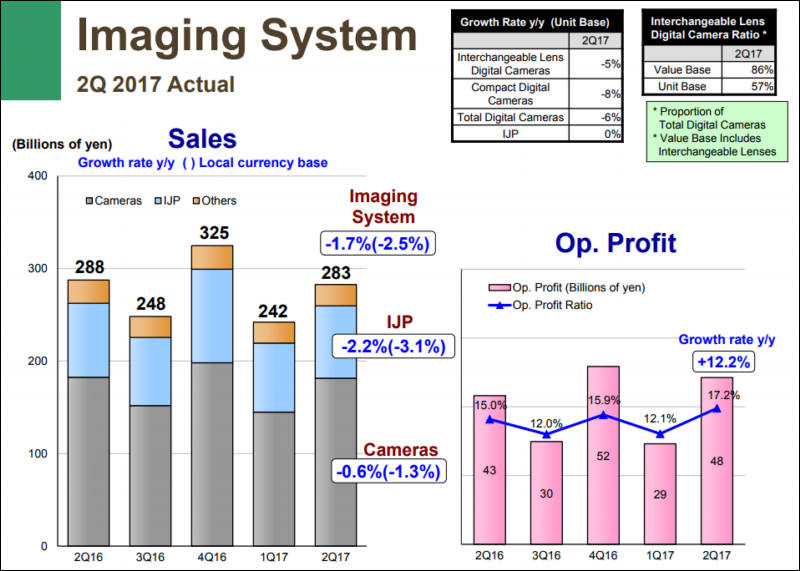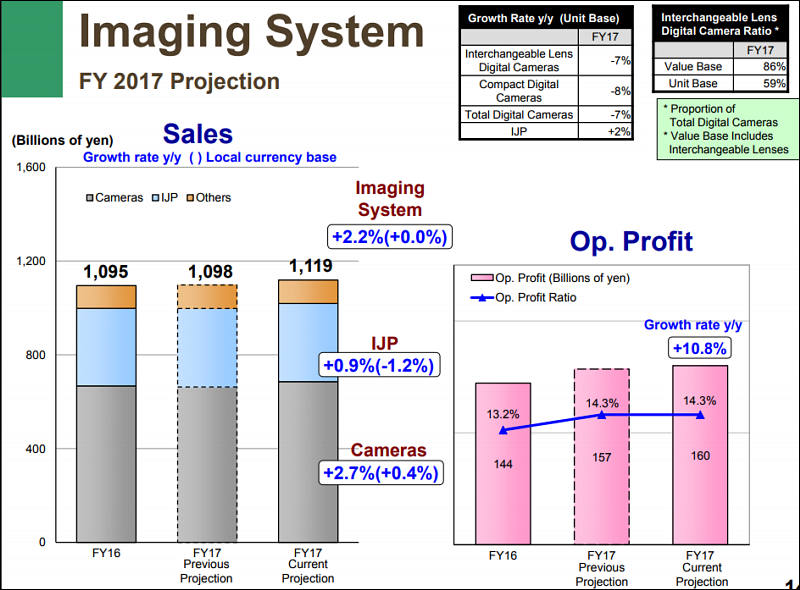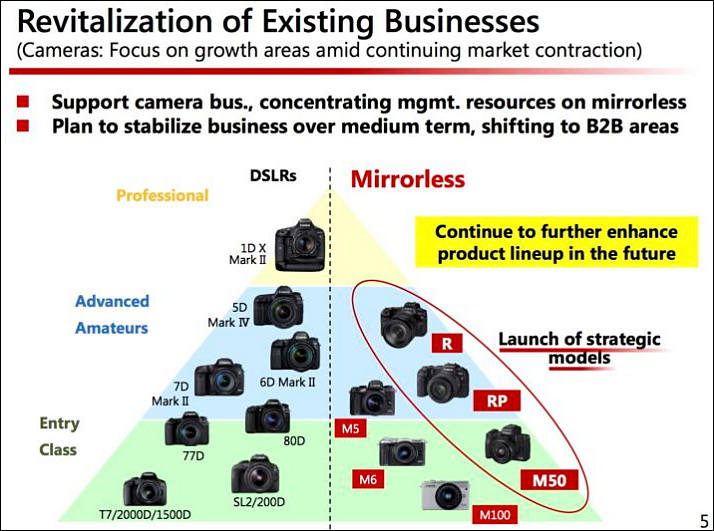
It allows to keep PV going, with more focus towards AI, but keeping be one of the few truly independent places.
-
As much as Atomos wants to sell their fancy monitors, HDR still has a ways to go.
-
As much as Atomos wants to sell their fancy monitors, HDR still has a ways to go.
This part I agree. But he could not say anything else.
-
@MikeLinn Steampunk inspired? Looks like it takes 4 x 4k out of the sensor. (Via 4 SDI cables).
-
120Mp sensor specs finally
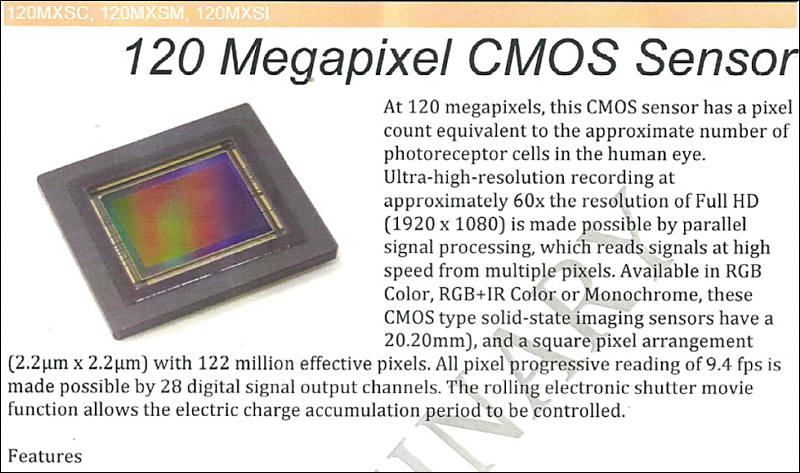


 img2812.jpg800 x 473 - 81K
img2812.jpg800 x 473 - 81K
 img2813.jpg800 x 664 - 110K
img2813.jpg800 x 664 - 110K -
On 250MP Sensor
-
New Rambus is born:
Canon Inc. again ranked first among Japanese companies and third overall for the number of U.S. patents awarded in 2016, according to the latest ranking of preliminary patent results issued by IFI CLAIMS Patent Services.
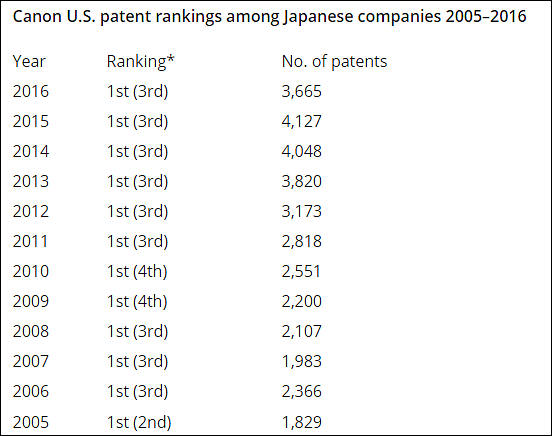

 sample264.jpg552 x 436 - 46K
sample264.jpg552 x 436 - 46K -
Canon U.S.A. Inc., a leader in digital imaging solutions, announced today that its parent company, Canon Inc., announced that the Company’s interchangeable-lens digital cameras have maintained the No. 1 share of the global market for 14 consecutive years from 2003 to 20161.
Canon Inc., which develops the key components featured in its interchangeable-lens cameras—CMOS image sensors, image processors and interchangeable lenses — employs these cutting-edge technologies across its entire product lineup, from entry-level models that achieve high-image quality with easy operation to professional-use flagship cameras, effectively responding to the needs of a wide range of users.
In 2003, the dawn of digital SLR cameras, Canon introduced its breakthrough EOS Digital Rebel. This groundbreaking camera, which was competitively priced and featured a compact, lightweight design, captured the top share of the global market and set the stage for growth in the digital SLR market. Since that time, Canon has continued to launch a range of epoch-making products, including the professional-model EOS-1D series and the EOS 5D series which paved the way for digital SLR video recording.
During 2016, Canon introduced an impressive lineup of interchangeable-lens camera products that supported the Company’s achievement of a 14th consecutive year at the top of the global market. In March, the Company released the EOS 80D for advanced-amateur users, which features excellent still image quality and superb operability when shooting video. Then in April, the Company released its flagship model, the EOS-1D X Mark II, ideal for sport photography thanks to its 14 frame-per-second continuous shooting capability. The EOS 5D Mark IV, capable of 4K video, was then released in September. Additionally, the Company’s interchangeable-lens camera lineup expanded with the introduction of the high-end EOS M5 compact-system camera in November.
Canon will continue to respond to the needs of its wide range of customers by further bolstering its lineup in 2017. Already this year, the Company launched three new interchangeable-lens cameras equipped with the highly accurate autofocus technology, Dual Pixel CMOS AF – the EOS M6 compact-system camera, the EOS 77D and EOS Rebel T7i.
-
Canon is really desperate this time.
T-Shirt looks like cemetery
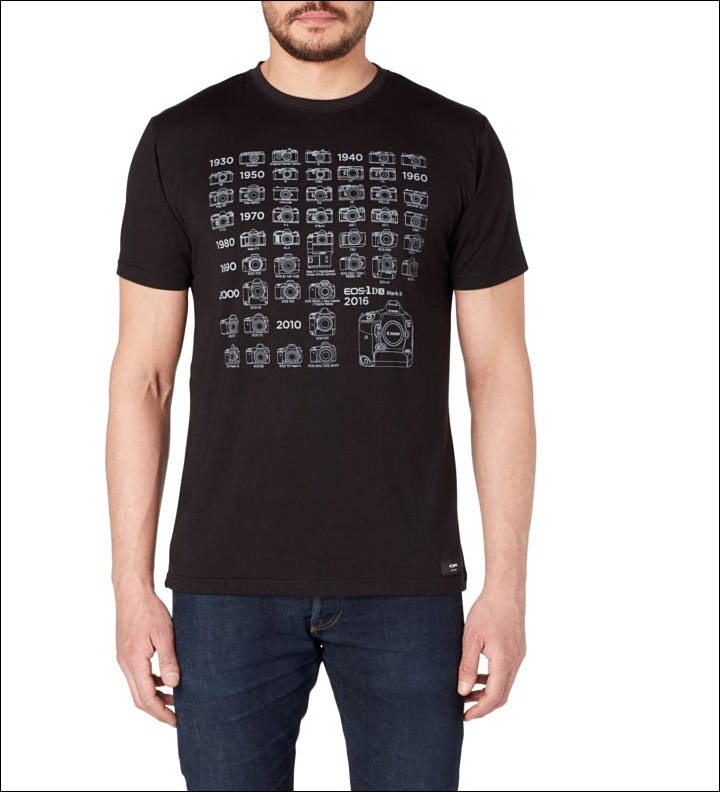
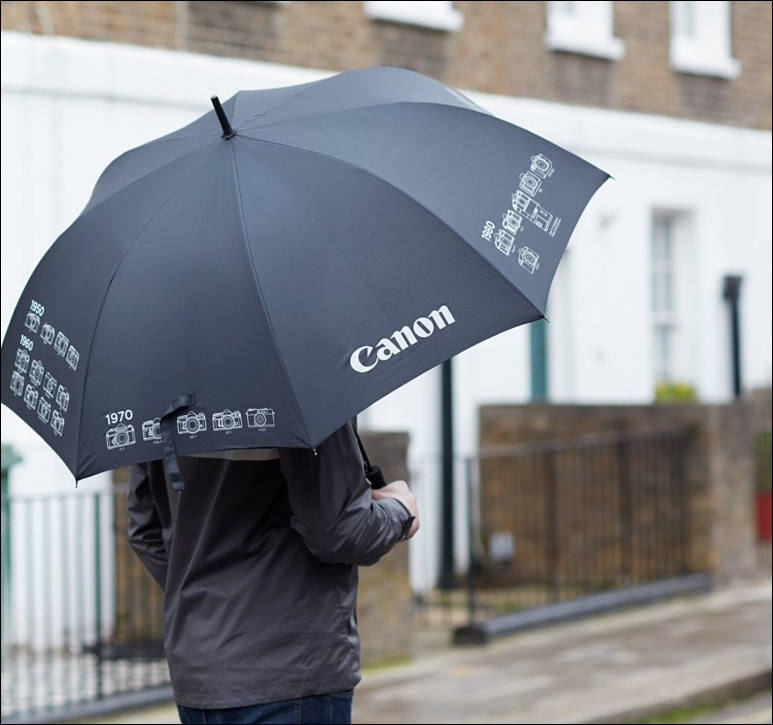

 sample1062.jpg720 x 792 - 55K
sample1062.jpg720 x 792 - 55K
 sample1063.jpg773 x 725 - 58K
sample1063.jpg773 x 725 - 58K -
Bad news
The EU Commission said it had reached a preliminary view that Canon breached rules by using a so-called "warehousing" two-step transaction structure involving an interim buyer to buy the company prior to obtaining relevant approvals.
Ten percent of Canon's annual revenue would be roughly equivalent to $2.9 billion.
The $6 billion deal, completed late last year, raised eyebrows at the time due to the unorthodox method which allowed Toshiba, which was struggling for cash after an accounting scandal, to book proceeds in time for the financial year-end in March.
Rival bidder Fujifilm Holdings Corp had criticized it as a "mockery of the law".
Huh
-
More focus on pros
MELVILLE, N.Y., July 13, 2017 – Continuing its support of professional clients in the filmmaking and still imaging communities, Canon today officially opened its doors to its newest Professional Technology & Support Center in Burbank, Calif. Evolving from what began at Canon’s original Hollywood facility, the new state-of-the-art Canon Burbank facility provides these customers with enhanced technical environments and accessible service and support.
Canon Burbank is poised to support Canon’s clients’ productivity through a dynamic mix of product evaluation and testing, product & workflow training, industry events and expedited repairs. Every aspect of the new facility’s design and operation was made in consideration of improving customers’ experience with Canon products from input to output, and in improving access to the highly trained Canon service and support team. Facility highlights include:
- Enhanced on-site repair capabilities
- Industry standard 4K projection and DI capabilities
- Workflow Lab for software training and NLE workflows
- Image lab for in-depth camera & lens testing, demonstration and troubleshooting
- Fully equipped multipurpose room for training, events, demonstration and shooting
- Immersive product showroom
“Since our 2011 launch of Cinema EOS, Canon has been steadfastly committed to exceeding the high expectations of our professional clients in the production community,” said Eliott Peck, executive vice president and general manager of the Imaging Technologies & Communications Group, Canon U.S.A., Inc. “Our new Burbank location represents the culmination of our commitment to listen to our clients, understand their needs and provide them with what they need to bring their artistic and passion projects to life. As Canon continues on its journey to support the production community and evolve with changes in this industry, our mission is now clearer than ever, to be a resource and a beacon for industry professionals.”
At Canon Burbank, customers may now take advantage of walk-in service Monday through Friday, with plenty of convenient parking. The location will feature a steady calendar of educational offerings from top professionals on the latest equipment and filmmaking techniques, the ability to color correct and screen content, and a lab for testing Canon cameras and lenses. The facility’s multipurpose room is also configurable for industry gatherings and special events.
The new Burbank location is yet another extension of Canon Professional Services’ (CPS) powerful support network for the region’s professional photographers, filmmakers, and videographers. CPS members are invited to visit Canon Burbank for all of their service needs, Canon Live Learning sessions, and professional training tailored to their needs.
-
MELVILLE, N.Y., September 5, 2017 – With massive flooding, thousands left homeless and communities in need of medical supplies, Canon U.S.A. Inc., a leader in digital imaging solutions, today announced it will be making a donation of $100,000 to Americares to be used toward the relief efforts from Hurricane Harvey.
Things seem to be really bad.
-
Canon Inc. announced today that the Company has reached two major production milestones — a cumulative total of 90 million interchangeable-lens EOS cameras and 130 million1 EF-series interchangeable lenses. The EOS 5D Mark IV was the 90 millionth EOS Series camera range to be produced, while an EF16-35mm f/2.8L III USM became the Company’s 130 millionth interchangeable lens.
Canon’s EOS system debuted alongside the EF series of interchangeable lenses in March 1987 as the world’s first fully-electronic mount system for film AF SLR cameras. Over the years, both product lines have continued to expand, gaining support among users ranging from first-time users to professionals. Production accelerated in the early 2000’s with the spread of digital SLR cameras. Canon’s interchangeable-lens digital cameras have maintained the No. 1 share of the global market for 14 consecutive years since 2003.2
Since its conception, the EOS series has continued to develop revolutionary technologies under the series concept of “speed and comfort”. Canon has since developed every key device in-house including the CMOS sensors, image processors and interchangeable lenses—employed in the EOS series. Particularly noteworthy are the Company’s EF lenses, which lead the industry in sales and feature such world-first3 innovations such as the Ultrasonic Motor (USM), Image Stabilizer (IS) technology and a multilayered Diffractive Optical (DO) element.
Canon will continue to strengthen and expand the EOS series and EF lens lineups by refining its imaging technologies, by striving to combine optics, stills, video and network technologies. The Company will also continue its pursuit of manufacturing products that are both stylish and reliable.
EOS Series
The EOS series of interchangeable-lens cameras began with the EOS 650 SLR camera, released in March 1987, that not only featured the world’s first electronic lens mounting system, but also fully digitized communication between the camera body and lens to produce a new generation of autofocus technology.
As film cameras boomed, Canon launched several models covering a wide range of user needs, including the EOS-1 in 1989, aimed at professionals, and the EOS 500 in 1993, which achieved a compact, lightweight design and greatly expanded Canon’s user base. Then in 2003, during the early years of the digital camera age, the Company released the groundbreaking EOS 300D Digital, an entry-level digital SLR camera that offered a compact, lightweight body at an affordable price. This move would trigger a massive expansion of the camera market, with Canon claiming the overwhelming lead in market share that same year. With the later release of the EOS-1D Series for professionals and the EOS 5D series, which helped popularize video capture using SLR cameras, Canon has continued to release epoch-making products that have enabled the Company to maintain the No. 1 share of the global interchangeable-lens digital camera market for 14 consecutive years from 2003 to 2016.
EF Lenses
Since the release of the first EF lens, launched alongside the EOS series in 1987, Canon has produced EF lenses featuring world-first technologies such as the EF75-300mm f/4-5.6 IS USM with IS in 1995, the EF400mm f/4 DO IS USM with a DO lens in 2001 and the EF24mm f/1.4L II USM, treated with highly antireflective Subwavelength Structure Coating (SWC) in 2008. In 2015 Canon released the EF11-24mm f/4L USM, the world’s first4 ultra-wide-angle zoom lens to achieve an 11mm focal length.
Today, Canon boasts 93 lenses5 in its rich EF lens lineup that comprises of lenses such as an ultra-wide-angle 8 mm focal length lens, an 800mm focal length super-telephoto lens and EF Cinema Series lenses for video production. With a wide selection of lenses for every purpose including zoom lenses, IS-equipped lenses, fast-aperture lenses, macro lenses and even the TS-E tilt-shift lenses, Canon is well-positioned to meet the needs of various users.
-
Most of new cameras premium margins went to banks
Canon will pay back more interest-bearing debt this year to improve its financial standing following the 2016 acquisition of a medical equipment business from Toshiba.
Repayment will double from 2017 levels to around 200 billion yen ($1.79 billion) in light of strong earnings last year, with an aim of whittling down borrowings from parties including Bank of Tokyo-Mitsubishi UFJ.
Canon upgraded its annual earnings forecast three times in 2017. The final projection called for net profit to increase roughly 60% to 245 billion yen on sales of 4.08 trillion yen, up nearly 20%. Mainstay businesses like digital cameras and office equipment have been faring well, along with such newer operations as medical equipment.
The Tokyo-based manufacturer bought Toshiba Medical Systems for about 665.5 billion yen in 2016. Interest-bearing debt reached 613.1 billion yen as of the end of that year, ballooning from 1.5 billion yen a year earlier.
The faster pace of repayment may also be driven by credit rating considerations. Moody’s Japan downgraded Canon from Aa1 to Aa3 in June 2016, citing a material increase in leverage from the purchase of the Toshiba unit. Until then, Canon had been the sole Japanese company with a Moody’s rating higher than Aa2.
-
New PR
In 2017, Canon U.S.A., a leader in digital imaging, was the number one selling Full-Frame Interchangeable Lens Camera (ILC)¹ brand and APS-C ILC² brand in the U.S., according to The NPD Group. Canon has been number one worldwide in these camera segments for the last 14 years, based on a global Canon survey³. February 4th showed that 2018 is off to a great start for Canon, as top sports photographers from across the country gathered in Minnesota to cover the big game between the teams from Philadelphia and New England. An estimated 80 percent4 of the photographers in the stadium used Canon EOS DSLR cameras and EF lenses, and Canon’s iconic white lenses filled the sidelines from the opening kickoff to the final whistle. In addition to the photographers on the sidelines, Canon’s line of HD broadcast lenses were also used extensively to help deliver the game to nearly 110 million television viewers.
“Canon understands there are many equipment options for photographers and we are honored to be the primary choice for both the pros capturing the nail-biting moments of the big game and for people capturing the important moments of their lives,” said Yuichi Ishizuka, president and COO, Canon U.S.A., Inc. “As an industry leader, we also recognize the important role that service and support plays in keeping our customers satisfied, whether at our award-winning service centers throughout the country or on-site at major global events.”
A full complement of friendly and knowledgeable staff from the Canon Professional Services (CPS) team, a fixture at major sporting events throughout the year, were on site at the stadium for most of the week leading up to game day providing comprehensive equipment maintenance, extensive equipment loans and expert technical support to the major photo agencies and individual professional (or media) photographers covering the game.
For veteran sports photographer and Canon Explorer of Light Peter Read Miller, this was his 40th time covering the big game as a professional, and he was well stocked with Canon cameras and lenses.
“CPS has been a great support to me throughout the years, especially at a game like this where I get real time technical and equipment support. They’ve been instrumental in my success over the years.”,” said Miller. “40 years of shooting the big game is an amazing experience. Photographers are just as competitive as the athletes, and it’s great to know that I can count on Canon equipment and support to help me get the winning shot.”
In 2018, CPS will be proudly attending to professional photographers at over 22 locations, including major sporting, auto racing, Hollywood and political events.
-
Most Ethical Company, LOL
As a testament to the company’s strong standing as a good corporate citizen and its proactive approach to corporate social responsibility initiatives, Canon U.S.A., Inc., a leader in digital imaging solutions, has been recognized as one of the 2018 World’s Most Ethical Companies by the Ethisphere Institute, a global leader in defining and advancing the standards of ethical business practices. This recognition is based on a variety of factors including: measuring and improving culture, leading with integrity and committing to transparency, diversity and inclusion. In 2018, 135 companies were recognized across 23 countries and 57 industries.
“I’d like to thank the Ethisphere Institute for this honor, which Canon takes great pride in,” said Kenneth Sharpe, Vice President, Corporate Audit, Ethics and Business Consultation, Canon U.S.A., Inc. “To be named as one of the World’s Most Ethical Companies is a true reflection of the values, culture and leadership that drive our organization. This distinction speaks to the integrity that is present throughout every level of our organization and represents the hard work and dedication of our cherished colleagues who work to meet this high standard every day.”
“While the discourse around the world changed profoundly in 2017, a stronger voice emerged. Global corporations operating with a common rule of law are now society’s strongest force to improve the human condition. This year we saw companies increasingly finding their voice. The World’s Most Ethical Companies, in particular, continued to show exemplary leadership,” said Timothy Erblich, Chief Executive Officer of Ethisphere. “I congratulate everyone at Canon U.S.A., Inc. for being recognized as one of the World’s Most Ethical Companies.”
The World’s Most Ethical Companies assessment is based upon the Ethisphere Institute’s Ethics Quotient® (EQ) framework, which offers a quantitative way to assess a company’s performance in an objective, consistent and standardized manner. The information collected provides a comprehensive sampling of definitive criteria of core competencies, rather than all aspects of corporate governance, risk, sustainability, compliance and ethics. Scores are generated in five key categories:
- Ethics and compliance program (35%)
- Corporate citizenship and responsibility (20%)
- Culture of ethics (20%)
- Governance (15%)
- Leadership, innovation and reputation (10%)
Research by the Ethisphere Institute has found that, when indexed, companies listed among the “World’s Most Ethical” outperformed the U.S. Large Cap Index over five years by 10.72 percent and over three years by 4.88 percent. Ethisphere refers to this as the Ethics Premium.
-
Canon fucked up to the mouse
-
Canon is known for fucking up good.
-
Canon Inc has announced today that the Company’s interchangeable-lens digital cameras (digital SLR and compact-system cameras) have maintained the No. 1 share of the global market for 15 consecutive years1, from 2003 to 2017.
Canon develops the key components featured in its interchangeable-lens cameras—CMOS image sensors, image processors and interchangeable lenses—in the pursuit of "Speed, Comfort and High Image Quality, the core concept of the EOS series.” The company effectively responds to the needs of a wide range of users through its extensive line-up of cameras, catering to all levels of photography from beginner to professional and a total2 of 93 EF series interchangeable lenses.
In 2003, the dawn of digital SLR cameras, Canon introduced its breakthrough EOS 300D digital camera. This groundbreaking camera, which was competitively priced and featured a compact, lightweight design, captured the top share of the global market and set the stage for growth in the digital SLR market. Since then, Canon has continued to launch a range of groundbreaking products, including the professional-model EOS-1D series and the EOS 5D series, which paved the way for digital SLR video recording. The company has further bolstered the EOS line-up by continuing to introduce new products including accessories, interchangeable lenses and the EOS M series of compact-system cameras. During 2017, Canon introduced the EOS 6D Mark II as part of an impressive line-up of interchangeable-lens camera products3 that supported the company’s achievement of a 15th consecutive year at the top of the global market.
Canon will continue to refine its diverse imaging technologies based on its core optical technology, combining still-image, video and network capabilities to expand and create an even stronger EOS System that meets the needs of increasingly diverse users to promote the spread of photo and video culture. What’s more, thanks to advances in imaging technology, Canon is opening-up new expressive avenues, where texture, three-dimensionality and a sense of realism can be recreated in both still images and videos, to support appealing imaging experiences.
-
It is almost exactly a year since Canon relaunched its brand with the aim of making it “accessible” to a wider group of customers. The shift was predicated on a realisation that the organisation needed to move from being product-centric to more customer-centric, focusing more on how its cameras and printers meet consumers’ needs rather than shouting about the latest specs.
The most obvious sign of this was a TV ad [editor’s note: see below], ‘Live for the story’ created by VCCP, that positioned Canon as a storytelling brand. That was followed up by work with influencers such as Zoe Kravitz to tap into particular genres of photography, including family, travel and food.
“The underlying premise was how do we help you tell the best story of your life,” explains Lee Bonniface, marketing director at Canon Europe. “It’s an integration of the brand owning the space of storytelling and then the integration of our products and services to allow customer to be able to tell their story in the best way possible.
Lost marketing at their best.
-

 sa7326.jpg714 x 531 - 75K
sa7326.jpg714 x 531 - 75K
Howdy, Stranger!
It looks like you're new here. If you want to get involved, click one of these buttons!
Categories
- Topics List23,979
- Blog5,725
- General and News1,352
- Hacks and Patches1,153
- ↳ Top Settings33
- ↳ Beginners255
- ↳ Archives402
- ↳ Hacks News and Development56
- Cameras2,362
- ↳ Panasonic991
- ↳ Canon118
- ↳ Sony156
- ↳ Nikon96
- ↳ Pentax and Samsung70
- ↳ Olympus and Fujifilm100
- ↳ Compacts and Camcorders300
- ↳ Smartphones for video97
- ↳ Pro Video Cameras191
- ↳ BlackMagic and other raw cameras116
- Skill1,961
- ↳ Business and distribution66
- ↳ Preparation, scripts and legal38
- ↳ Art149
- ↳ Import, Convert, Exporting291
- ↳ Editors191
- ↳ Effects and stunts115
- ↳ Color grading197
- ↳ Sound and Music280
- ↳ Lighting96
- ↳ Software and storage tips267
- Gear5,414
- ↳ Filters, Adapters, Matte boxes344
- ↳ Lenses1,579
- ↳ Follow focus and gears93
- ↳ Sound498
- ↳ Lighting gear314
- ↳ Camera movement230
- ↳ Gimbals and copters302
- ↳ Rigs and related stuff272
- ↳ Power solutions83
- ↳ Monitors and viewfinders339
- ↳ Tripods and fluid heads139
- ↳ Storage286
- ↳ Computers and studio gear560
- ↳ VR and 3D248
- Showcase1,859
- Marketplace2,834
- Offtopic1,319


